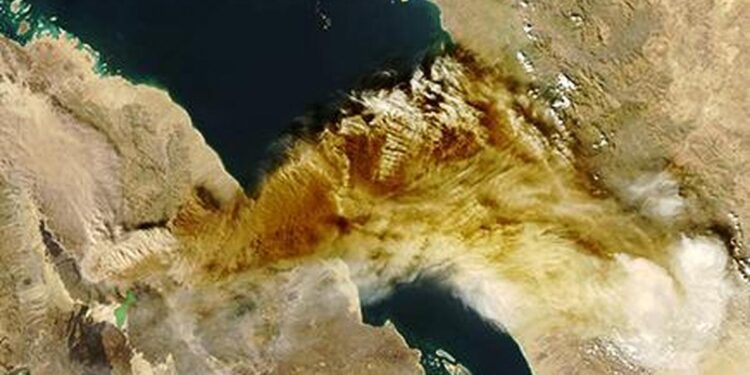Lagatar24 Desk
New Delhi: Volcanic ash drifting from Ethiopia’s Hayli Gubbi eruption reached India late Monday night, affecting skies over Delhi and several western and northern states. The India Meteorological Department (IMD) has now issued a major update, confirming that the ash plume is expected to exit Indian airspace by 7:30 pm (IST) on Tuesday.
Where the Ash Came From
The plume — containing volcanic ash, sulphur dioxide and fine rock particles — originated after Hayli Gubbi, a long-dormant volcano in Ethiopia’s Afar region, erupted on Tuesday. High-level winds carried the cloud across the Red Sea to Yemen and Oman, before sweeping over the Arabian Sea and into India.
Forecast models indicate ash influence over Gujarat, Rajasthan, Delhi-NCR, Maharashtra, Punjab, and Haryana, with further movement expected toward the Himalayas and the Terai belt of Uttar Pradesh. The ash cloud is travelling at 100–120 km/h at altitudes between 15,000–25,000 ft, occasionally rising to 45,000 ft.
IMD’s Major Update: When Will Ash Leave India?
IMD Director General Mrutyunjay Mohapatra confirmed that the ash plume is steadily drifting eastward and will move towards China after exiting India. The plume is expected to clear Indian skies by 14:00 GMT (7:30 pm IST) on Tuesday.
IMD has been continuously monitoring satellite data, Volcanic Ash Advisory Centre (VAAC) bulletins, and dispersion models to track the plume’s movement. Aviation regulators have already issued advisories to pilots due to possible flight disruptions.
Impact on Flights and Air Travel
Following DGCA’s alert, airlines have been adjusting routes to avoid ash-heavy zones. Akasa Air has cancelled flights to and from Jeddah, Kuwait, and Abu Dhabi on November 24 and 25 due to safety concerns linked to ash presence at high altitudes.
Ash clouds pose a serious hazard to aircraft engines and visibility, prompting strict international protocols for airspace safety.














